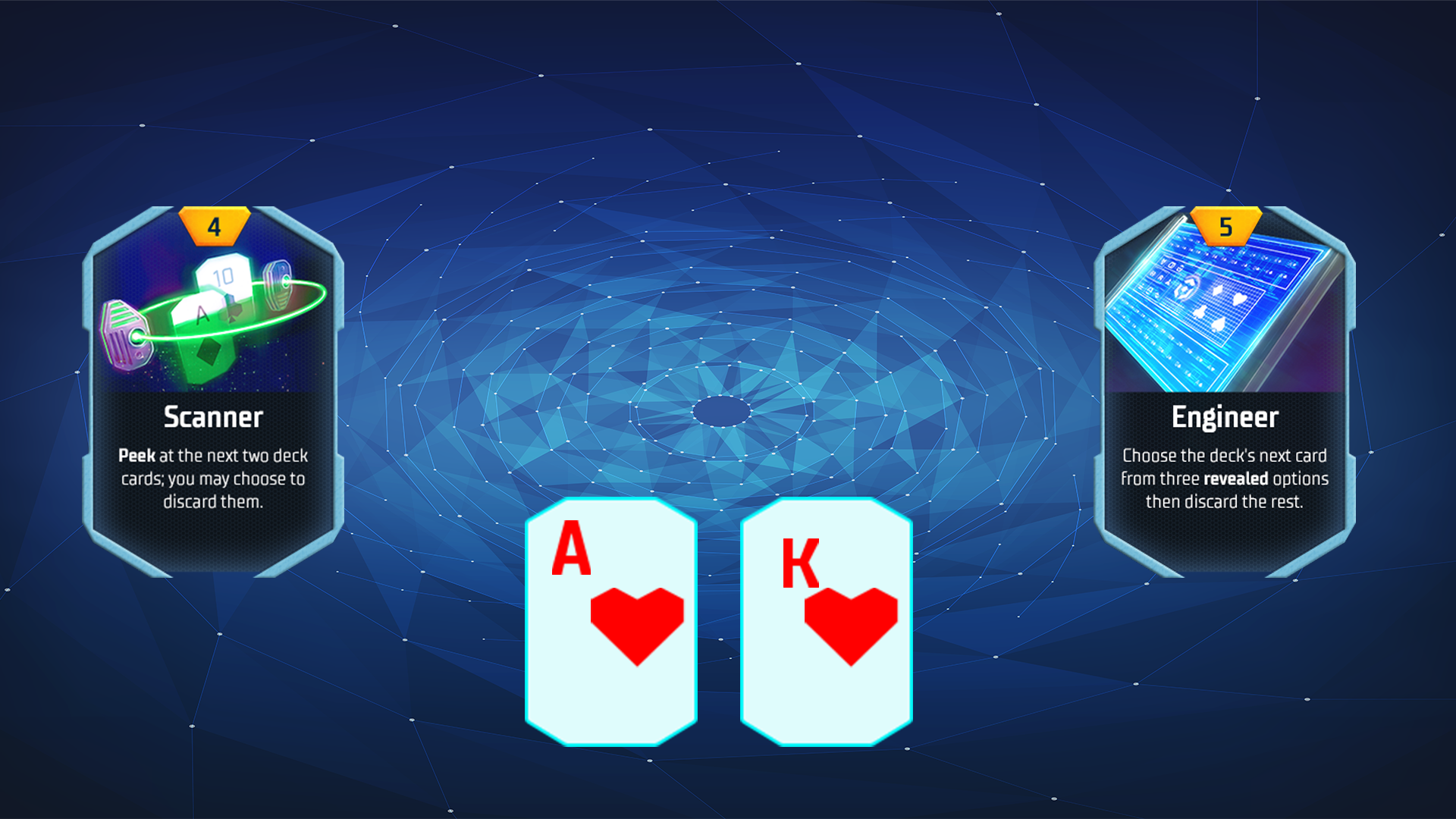In poker strategy, starting hands are the first step in developing a playing style. In power up, we have 2 sets of cards to look at, our hole cards and our power cards. The range of starting cards we should be willing to play is dynamic, and very situational.
When I’m playing poker, whether it is a big multi table format, or a three-handed spin and go, I select which hands I want to play almost automatically. It’s an ability I’ve learnt over more than 20 years playing poker. With power up, I’m starting to find that I need to have a much more dynamic starting hand range, depending on what power cards I’m holding. I’m always going to be playing the classic “premium hands” like a pair of Aces, or Kings, or Ace King, a pair of Tens, and so on, but the more marginal hands from poker seem to gain in strength depending on the power cards I can use later in a hand.
The differences start when I’m holding power cards that improve my chances of hitting a flush or straight draw. Engineer and Scanner are my favourite cards for this, and if I’m holding both, I’m comfortable playing connecting suited cards such as the 7 and 8 of a suit, or better. These suited connectors seem to have an increased value when I’m able to determine the cards to come on the turn and river. I’m still going to need to see a draw appear on the flop, and I’m hoping to see a flush draw as my odds are better. A flush and a straight draw means I’m unlikely to be going anywhere, and I’ll be using as many power cards as I need to find one of the cards I need while making the pot as bloated as possible. This has two advantages. One, I’m likely to win a bigger pot when I hit my card. Two, my aggression is also going to put pressure on my opponents to fold their hand when they are looking for cards to improve their hand. It also works when they have only connected with the board in a weak way, such as a small pair.
Engineer and Scanner aren’t the only power cards that impact my starting hands. While disintegrate isn’t considered by many to be a great power card, when I have it, I like to play hands such as King Ten, and similar. The power of the King goes significantly up, in my opinion, when you can blast any single Ace off the board by playing Disintegrate. Obviously, you’ll have to be willing to fold when it’s obvious you are beaten, so playing Kings with a decent second card (also called a Kicker) relies on you being able to put your opponents on a range of hands. If you don’t feel comfortable doing this yet, it might be safer and still profitable, to look at this strategy when you have more experience. Some players will never use this strategy, and still have a winning record in power up.
I still need to start crunching the numbers on this, I’ve not discovered a formula that works like the available programs for the poker games out there. My thoughts are based on my years of playing poker, and my experiences playing Power Up over the past month or so.
That means this is a work in progress, and I’ll be looking to add it to our new training series we have in production.
I’m finding the more I delve in to the game of Power Up that the game is more complicated than it first looked. The powers originally just looked like a veneer over the top of an existing game of poker, but as you can see from what I’ve said earlier in this article, everything is impacted by the addition of power cards. We must consider two different factors before we start to play a hand. How strong our hole cards are, and do our power cards synergise with them? We’re going to have to throw out our basic poker strategy and re-evaluate how we start playing hands. It’s only going to get more complicated as we get to looking at the flop, turn and river, because the options we have are exponentially greater than we are used to playing poker. I’ll continue to give you my thoughts as I explore the universe of Power Up and we develop our training and strategy resources for you to improve your game.










